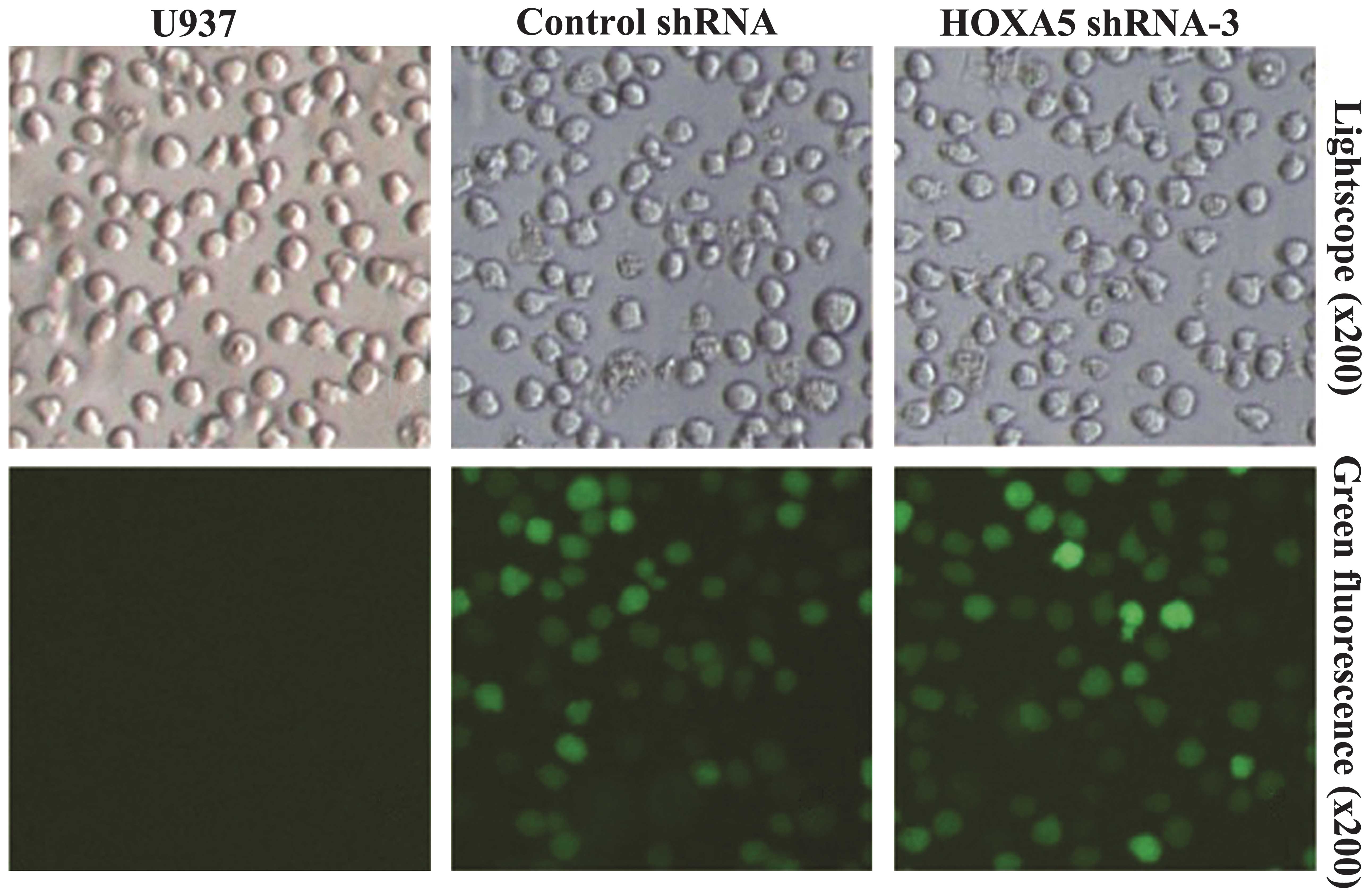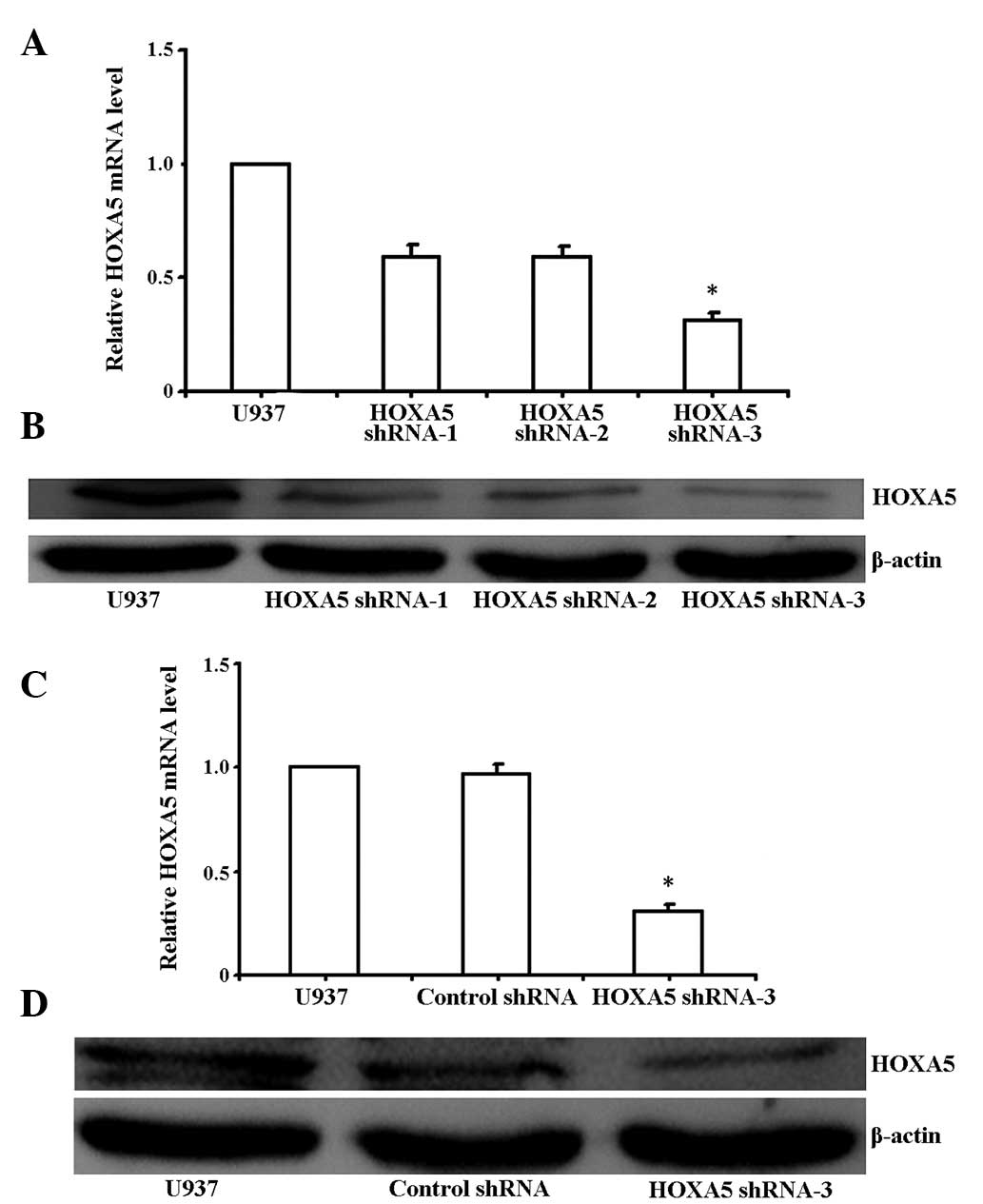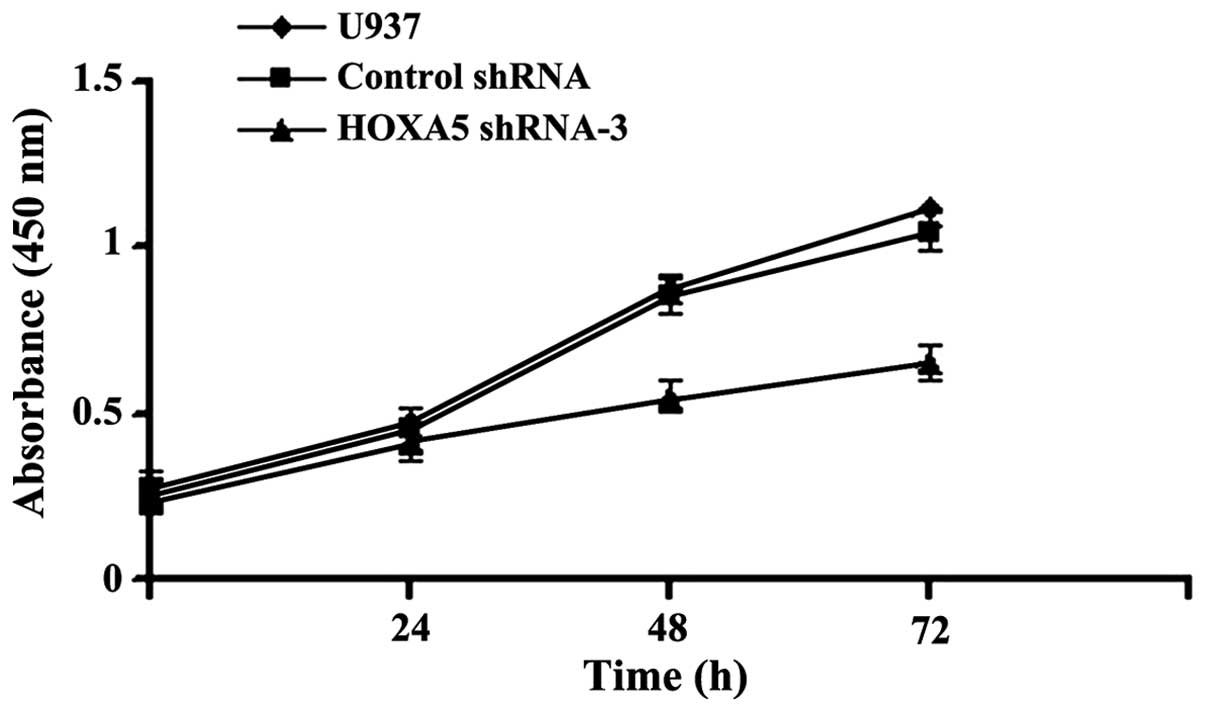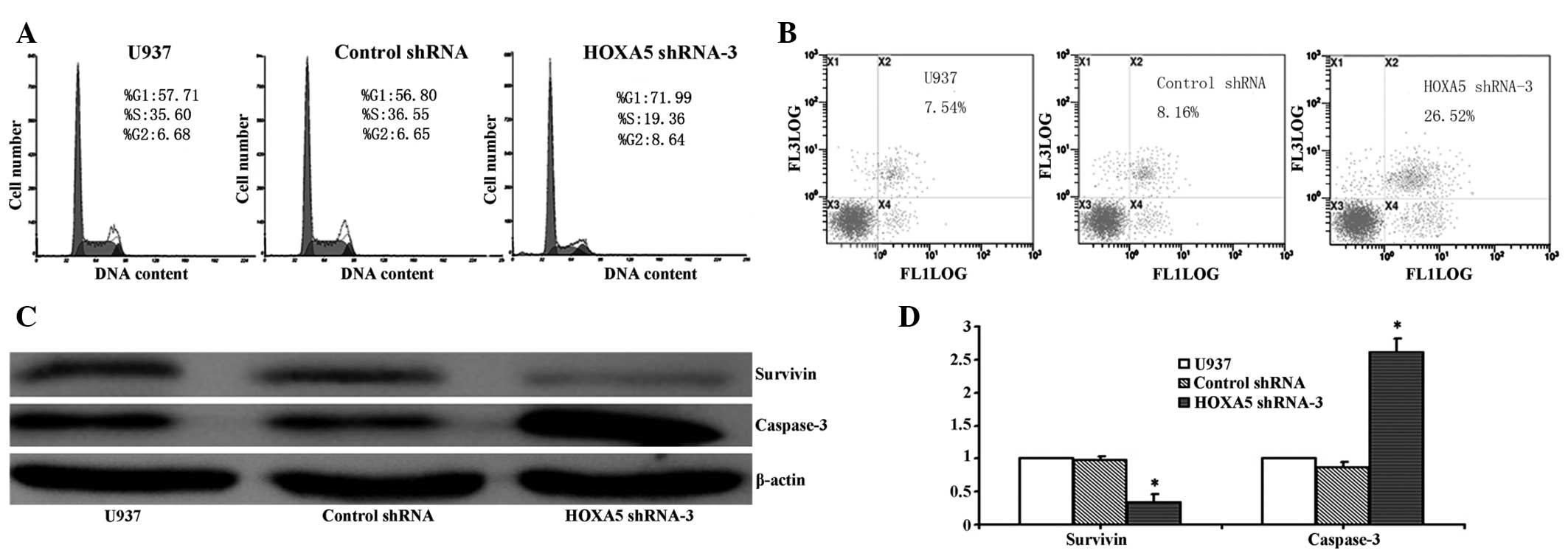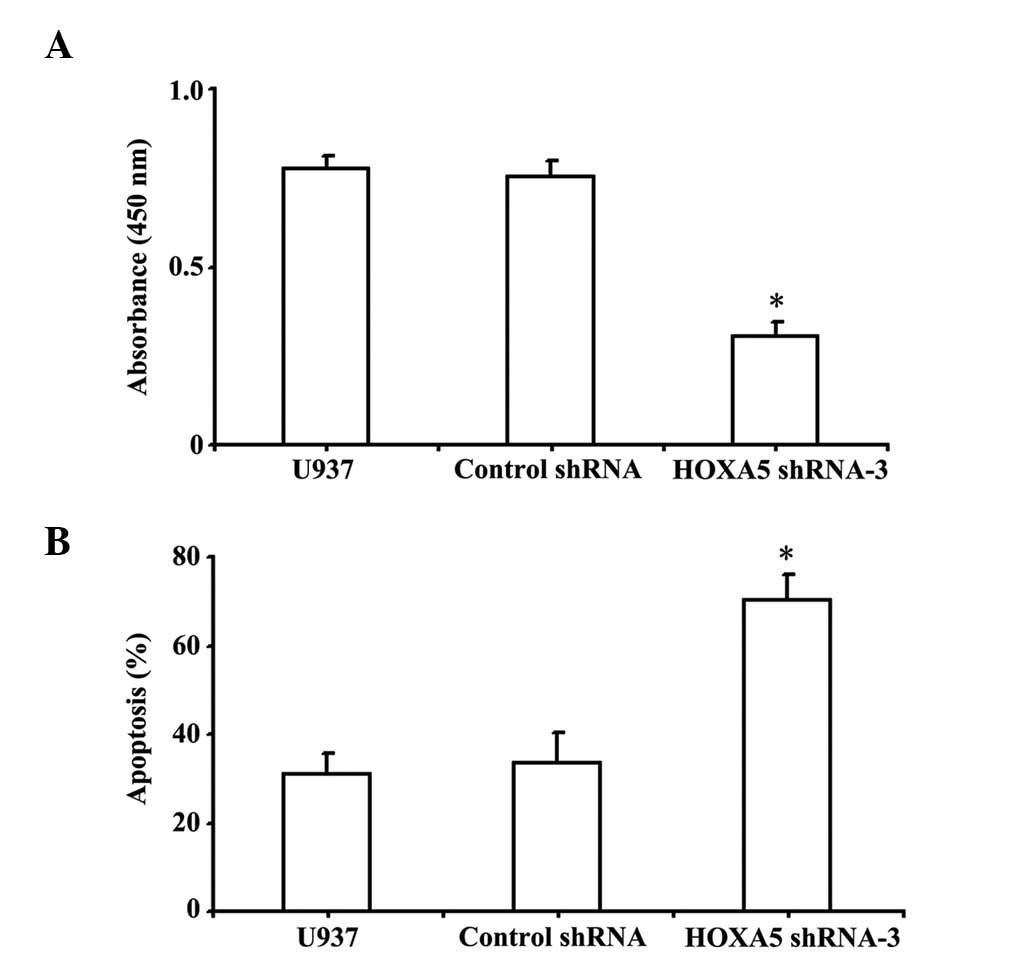|
1
|
Passegué E, Jamieson CH, Ailles LE and
Weissman IL: Normal and leukemic hematopoiesis: Are leukemias a
stem cell disorder or a reacquisition of stem cell characteristics?
Proc Natl Acad Sci USA. 100(Suppl 1): 11842–11849. 2003. View Article : Google Scholar : PubMed/NCBI
|
|
2
|
Jemal A, Siegel R, Xu J and Ward E: Cancer
statistics. 2010. CA Cancer J Clin. 60:277–300. 2010. View Article : Google Scholar : PubMed/NCBI
|
|
3
|
Estey E and Döhner H: Acute myeloid
leukaemia. Lancet. 368:1894–1907. 2006. View Article : Google Scholar : PubMed/NCBI
|
|
4
|
Bali P, George P, Cohen P, Tao J, Guo F,
Sigua C, Vishvanath A, Scuto A, Annavarapu S, Fiskus W, et al:
Superior activity of the combination of histone deacetylase
inhibitor LAQ824 and the FLT-3 kinase inhibitor PKC412 against
human acute myelogenous leukemia cells with mutant FLT-3. Clin
Cancer Res. 10:4991–4997. 2004. View Article : Google Scholar : PubMed/NCBI
|
|
5
|
Christiansen DH, Andersen MK, Desta F and
Pedersen-Bjergaard J: Mutations of genes in the receptor tyrosine
kinase (RTK)/RAS-BRAF signal transduction pathway in
therapy-related myelodysplasia and acute myeloid leukemia.
Leukemia. 19:2232–2240. 2005. View Article : Google Scholar : PubMed/NCBI
|
|
6
|
Plass C, Oakes C, Blum W and Marcucci G:
Epigenetics in acute myeloid leukemia. Semin Oncol. 35:378–387.
2008. View Article : Google Scholar : PubMed/NCBI
|
|
7
|
Yao K, Xing H, Yang W, Liao A, Wu B, Li Y,
Zhang R and Liu Z: Knockdown of RLIP76 expression by RNA
interference inhibits proliferation, enhances apoptosis, and
increases chemosensitivity to daunorubicin in U937 leukemia cells.
Tumour Biol. 35:8023–8031. 2014. View Article : Google Scholar : PubMed/NCBI
|
|
8
|
Cillo C, Cantile M, Faiella A and
Boncinelli E: Homeobox genes in normal and malignant cells. J Cell
Physiol. 188:161–169. 2001. View
Article : Google Scholar : PubMed/NCBI
|
|
9
|
Bullinger L, Döhner K, Bair E, Fröhling S,
Schlenk RF, Tibshirani R, Döhner H and Pollack JR: Use of
gene-expression profiling to identify prognostic subclasses in
adult acute myeloid leukemia. N Engl J Med. 350:1605–1616. 2004.
View Article : Google Scholar : PubMed/NCBI
|
|
10
|
Grubach L, Juhl-Christensen C, Rethmeier
A, Olesen LH, Aggerholm A, Hokland P and Ostergaard M: Gene
expression profiling of Polycomb: Hox and Meis genes in patients
with acute myeloid leukaemia. Eur J Haematol. 81:112–122. 2008.
View Article : Google Scholar : PubMed/NCBI
|
|
11
|
Thorsteinsdottir U, Sauvageau G and
Humphries RK: Hox homeobox genes as regulators of normal and
leukemic hematopoiesis. Hematol Oncol Clin North Am. 11:1221–1237.
1997. View Article : Google Scholar
|
|
12
|
Crooks GM, Fuller J, Petersen D, Izadi P,
Malik P, Pattengale PK, Kohn DB and Gasson JC: Constitutive HOXA5
expression inhibits erythropoiesis and increases myelopoiesis from
human hematopoietic progenitors. Blood. 94:519–528. 1999.PubMed/NCBI
|
|
13
|
Lawrence HJ and Largman C: Homeobox genes
in normal hematopoiesis and leukemia. Blood. 80:2445–2453.
1992.PubMed/NCBI
|
|
14
|
Celetti A, Barba P, Cillo C, Rotoli B,
Boncinelli E and Magli MC: Characteristic patterns of HOX gene
expression in different types of human leukemia. Int J Cancer.
237–244. 1993. View Article : Google Scholar : PubMed/NCBI
|
|
15
|
Drabkin HA, Parsy C, Ferguson K, Guilhot
F, Lacotte L, Roy L, Zeng C, Baron A, Hunger SP, Varella-Garcia M,
et al: Quantitative HOX expression in chromosomally defined subsets
of acute myelogenousleukemia. Leukemia. 16:186–195. 2002.
View Article : Google Scholar : PubMed/NCBI
|
|
16
|
Golub TR, Slonim DK, Tamayo P, Huard C,
Gaasenbeek M, Mesirov JP, Coller H, Loh ML, Downing JR, Caligiuri
MA, Bloomfield CD and Lander ES: Molecular classification of
cancer: Class discovery and class prediction by gene expression
monitoring. Science. 286:531–537. 1999. View Article : Google Scholar : PubMed/NCBI
|
|
17
|
Shah N and Sukumar S: The hox genes and
their roles in oncogenesis. Nat Rev Cancer. 10:361–371. 2010.
View Article : Google Scholar : PubMed/NCBI
|
|
18
|
Graham A, Papalopulu N and Krumlauf R: The
murine and drosophila homeobox gene complexes have common features
of organization and expression. Cell. 57:367–378. 1989. View Article : Google Scholar : PubMed/NCBI
|
|
19
|
Waltregny D, Alami Y, Clausse N, de Leval
J and Castronovo V: Overexpression of the homeobox gene HOXC8 in
human prostate cancer correlates with loss of tumor
differentiation. Prostate. 50:162–169. 2002. View Article : Google Scholar : PubMed/NCBI
|
|
20
|
Makiyama K, Hamada J, Takada M, Murakawa
K, Takahashi Y, Tada M, Tamoto E, Shindo G, Matsunaga A, Teramoto
K, et al: Aberrant expression of HOX genes in human invasive breast
carcinoma. Oncol Rep. 13:673–679. 2005.PubMed/NCBI
|
|
21
|
Abe M, Hamada J, Takahashi O, Takahashi Y,
Tada M, Miyamoto M, Morikawa T, Kondo S and Moriuchi T: Disordered
expression of HOX genes in human non-small cell lung cancer. Oncol
Rep. 15:797–802. 2006.PubMed/NCBI
|
|
22
|
Thorsteinsdottir U, Mamo A, Kroon E,
Jerome L, Bijl J, Lawrence HJ, Humphries K and Sauvageau G:
Overexpression of the myeloid leukemia-associated hoxa9 gene in
bone marrow cells induces stem cell expansion. Blood. 99:121–129.
2002. View Article : Google Scholar : PubMed/NCBI
|
|
23
|
Bach C, Buhl S, Mueller D, García-Cuéllar
MP, Maethner E and Slany RK: Leukemogenic transformation by HOXA
cluster genes. Blood. 115:2910–2918. 2010. View Article : Google Scholar : PubMed/NCBI
|
|
24
|
Mulgrew NM, Kettyle LM, Ramsey JM, Cull S,
Smyth LJ, Mervyn DM, Bijl JJ and Thompson A: c-Met inhibition in a
HOXA9/Meis1 model of CN-AML. Dev Dyn. 243:172–181. 2014. View Article : Google Scholar
|
|
25
|
Okada Y, Jiang Q, Lemieux M, Jeannotte L,
Su L and Zhang Y: Leukaemic transformation by CALM-AF10 involves
upregulation of hoxa5 by hDOT1 L. Nat Cell Biol. 8:1017–1024. 2006.
View Article : Google Scholar : PubMed/NCBI
|
|
26
|
Quentmeier H, Dirks WG, Macleod RA,
Reinhardt J, Zaborski M and Drexler HG: Expression of HOX genes in
acute leukemia cell lines with and without MLL translocations. Leuk
Lymphoma. 45:567–574. 2004. View Article : Google Scholar : PubMed/NCBI
|
|
27
|
Deveraux QL and Reed JC: IAP family
proteins-suppressors of apoptosis. Gen Dev. 13:239–252. 1999.
View Article : Google Scholar
|
|
28
|
Karami H, Baradaran B, Esfahani A, Estiar
MA, Naghavi-Behzad M, Sakhinia M and Sakhinia E: siRNA-mediated
silencing of survivin inhibits proliferation and enhances etoposide
chemosensitivity in acute myeloid leukemia cells. Asian Pac J
Cancer Prev. 14:7719–7724. 2013. View Article : Google Scholar
|
|
29
|
Riedl SJ and Shi Y: Molecular mechanisms
of caspase regulation during apoptosis. Nat Rev Mol Cell Biol.
5:897–907. 2004. View
Article : Google Scholar : PubMed/NCBI
|
|
30
|
Sommer KW, Schamberger CJ, Schmidt GE,
Sasgary S and Cerni C: Inhibitor of apoptosis protein (IAP)
survivin is upregulated by oncogenic c-H-Ras. Oncogene.
22:4266–4280. 2003. View Article : Google Scholar : PubMed/NCBI
|
|
31
|
Yamanaka K, Nakata M, Kaneko N, Fushiki H,
Kita A, Nakahara T, Koutoku H and Sasamata M: YM155, a selective
survivin suppressant, inhibits tumor spread and prolongs survival
in a spontaneous metastatic model of human triple negative breast
cancer. Int J Oncol. 39:569–575. 2011.PubMed/NCBI
|
|
32
|
Blanc-Brude OP, Mesri M, Wall NR, Plescia
J, Dohi T and Altieri DC: Therapeutic targeting of the survivin
pathway in cancer: Initiation of mitochondrial apoptosis and
suppression of tumor-associated angiogenesis. Clin Cancer Res.
9:2683–2692. 2003.PubMed/NCBI
|



